
James Bond "Jim" Stockdale was a United States Navy vice admiral and aviator who was awarded the Medal of Honor in the Vietnam War, during which he was a prisoner of war for over seven years.

The Douglas A-4 Skyhawk is a single-seat subsonic carrier-capable light attack aircraft designed and produced by the American aerospace manufacturer Douglas Aircraft Company, and later, McDonnell Douglas. It was originally designated A4D under the United States Navy's pre-1962 designation system.

George Thomas Coker is a retired United States Navy commander who was awarded the Navy Cross for extraordinary heroism as a prisoner of war (POW) during the Vietnam War. An Eagle Scout, he is noted for his devotion to Scouting.

Everett Alvarez Jr. is a retired United States Navy officer who endured one of the longest periods as a prisoner of war (POW) in U.S. military history. Alvarez was the first U.S. pilot to be shot down and detained during the Vietnam War and spent over eight years in captivity, making him the second longest-held U.S. POW, after U.S. Army Colonel Floyd James Thompson.
The early life and military career of John Sidney McCain III spans the first forty-five years of his life (1936–1981). McCain's father and grandfather were admirals in the United States Navy. McCain was born on August 29, 1936, in the Panama Canal Zone, and attended many schools growing up as his family moved among naval facilities. McCain graduated from the United States Naval Academy in 1958. He married the former Carol Shepp in 1965; he adopted two children from her previous marriage and they had another child together.
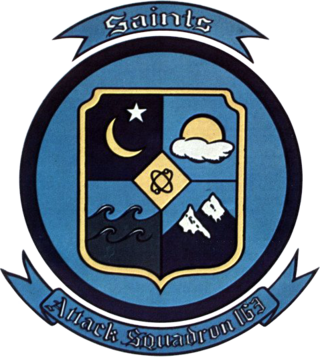
Attack Squadron 163 (VA-163) Saints was an aviation unit of the United States Navy. VA-163 flew the Douglas A-4 Skyhawk from 1960 to 1969.
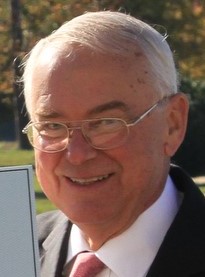
Paul Edward Galanti is a retired Commander in the United States Navy and Naval Aviator. Serving on active duty from 1962 to 1982, he was a Prisoner of War from 1966 to 1973 during the Vietnam War. He was also a member of the Swift Boat Veterans for Truth, and the 2nd commissioner of the Virginia Department of Veterans Services. He was married to the former Phyllis Eason, who died on April 23, 2014. He has two grown sons.

Ernest Eugene (Gene) Tissot Jr. was a United States Navy Rear Admiral and naval aviator who was highly decorated for his actions during the Korean War and the Vietnam War. He was born in Upland, California, and entered the Navy as a Naval Aviation Cadet in June 1945 and learned to fly in the Stearman N2S biplane at the Naval Air Station Livermore in August 1946. He was designated a Naval Aviator in June 1948 and commissioned as an Ensign that December. He was advanced in rank to Captain in January 1969 and his selection for the rank of Rear Admiral was approved by the President in March 1973.
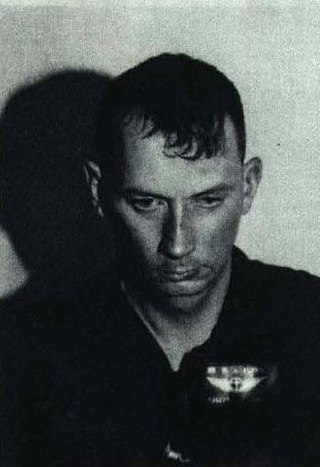
Robert James Flynn was a Commander and Naval Flight Officer bombardier/navigator in the United States Navy. As a Lieutenant, he was captured by the Chinese in August 1967 after the A-6 Intruder he was flying in on a mission over North Vietnam was shot down. Flynn and his pilot, along with another A-6 Intruder crew, were evading North Vietnamese jets following their mission over Hanoi when they strayed over the border into Chinese air space. Downed just over the Chinese border, Flynn was apprehended by the Chinese and held in China as a Prisoner of War where he was tortured and held almost exclusively in solitary confinement for five and a half years.

VA-55 was an Attack Squadron of the U.S. Navy. It was established as Torpedo Squadron VT-5 on 15 February 1943, redesignated VA-6A on 15 November 1946, and finally designated VA-55 on 16 August 1948. The squadron was disestablished on 12 December 1975. It was the first squadron to be designated VA-55, the second VA-55 was established on 7 October 1983 and disestablished on 1 January 1991.
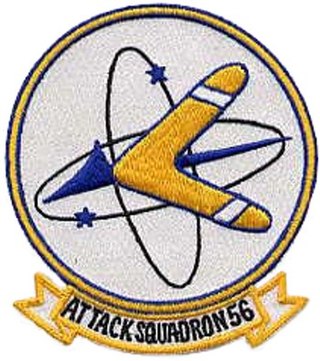
VA-56 was an Attack Squadron of the U.S. Navy. It was established on 4 June 1956, and disestablished thirty years later, on 31 August 1986. The squadron's nickname was the Boomerangs from 1957 to 1958, and the Champions thereafter.

VA-76 was an Attack Squadron of the U.S. Navy. It was established on 1 June 1955 and disestablished on 30 September 1969. The squadron was nicknamed the Spirits, from its motto Fighting Spirits of 76.

VA-112 was an Attack Squadron of the U.S. Navy. It was established as Bomber-Fighter Squadron VBF-11 on 9 April 1945, redesignated Fighter Squadron VF-12A on 15 November 1946, then as VF-112 on 15 July 1948. It was finally redesignated as VA-112 on 15 February 1959. The squadron was disestablished on 10 October 1969. Its nickname from 1961 to 1969 was the Broncos.

VA-144 was an Attack Squadron of the U.S. Navy, nicknamed the Roadrunners. It was established as VA-116 on 1 December 1955, and redesignated VA-144 on 23 February 1959. The squadron was disestablished on 29 January 1971.

Attack Squadron 145 (VA-145) was an aviation unit of the United States Navy, nicknamed the Rustlers from 1951-1954, and the Swordsmen thereafter. The squadron was established as Reserve squadron VA-702 on 1 December 1949, and called to active duty on 20 July 1950. It was redesignated VA-145 on 4 February 1953, and disestablished on 1 October 1993.

VA-153 was an Attack Squadron of the U.S. Navy. During a 1949 reorganization of the Naval Air Reserve, a Fighter Squadron at NAS New York was redesignated Fighter Squadron VF-831. It was called to active duty on 1 February 1951. The squadron was redesignated as VF-153 on 4 February 1953, and finally as VA-153 on 15 December 1956. It was disestablished on 30 September 1977. The squadron's nickname was the Blue Tail Flies from 1953 onward.

Attack Squadron 155 or VA-155 was an 'Attack Squadron of the U.S. Navy. It was established as Reserve Attack Squadron VA-71E in 1946, redesignated as VA-58A on 1 October 1948, and redesignated Reserve Composite Squadron VC-722 on 1 November 1949. The squadron was redesignated as VA-728 on 1 April 1950, and called to active duty on 1 February 1951. It was ultimately redesignated VA-155 on 4 February 1953, and disestablished on 30 September 1977. Its nickname was Silver Fox from the early 1960s onward. It was the second squadron to be named VA-155, the first VA-155 was disestablished on 30 November 1949, while a third VA-155 was established on 1 September 1987 and disestablished on 30 April 1993.

VA-164, nicknamed the Ghostriders, was an Attack Squadron of the U.S. Navy. It was established on 1 September 1960 and disestablished on 12 December 1975.

Edward Holmes Martin was a vice admiral in the United States Navy. Martin attended the United States Naval Academy, graduating in the class of 1954. He was also an alumnus of George Washington University, the Naval War College, and the National War College. During the Vietnam War, Martin was shot down during a mission and was kept as a prisoner of war in Hanoi for close to six years.
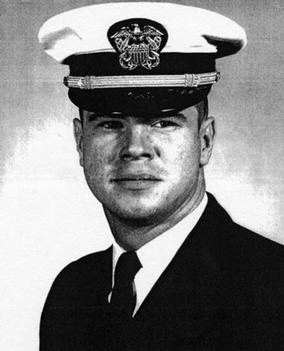
Lieutenant Commander James J. Connell was an American naval aviator. Born in Wilmington, Delaware, Connell served in the United States Navy as a naval aviator. During the Vietnam War, Connell was shot down and captured, eventually dying in captivity. He was posthumously awarded the Navy Cross, with Connell's decoration being the highest award for valor bestowed on a Delawarean during the Vietnam War.


















